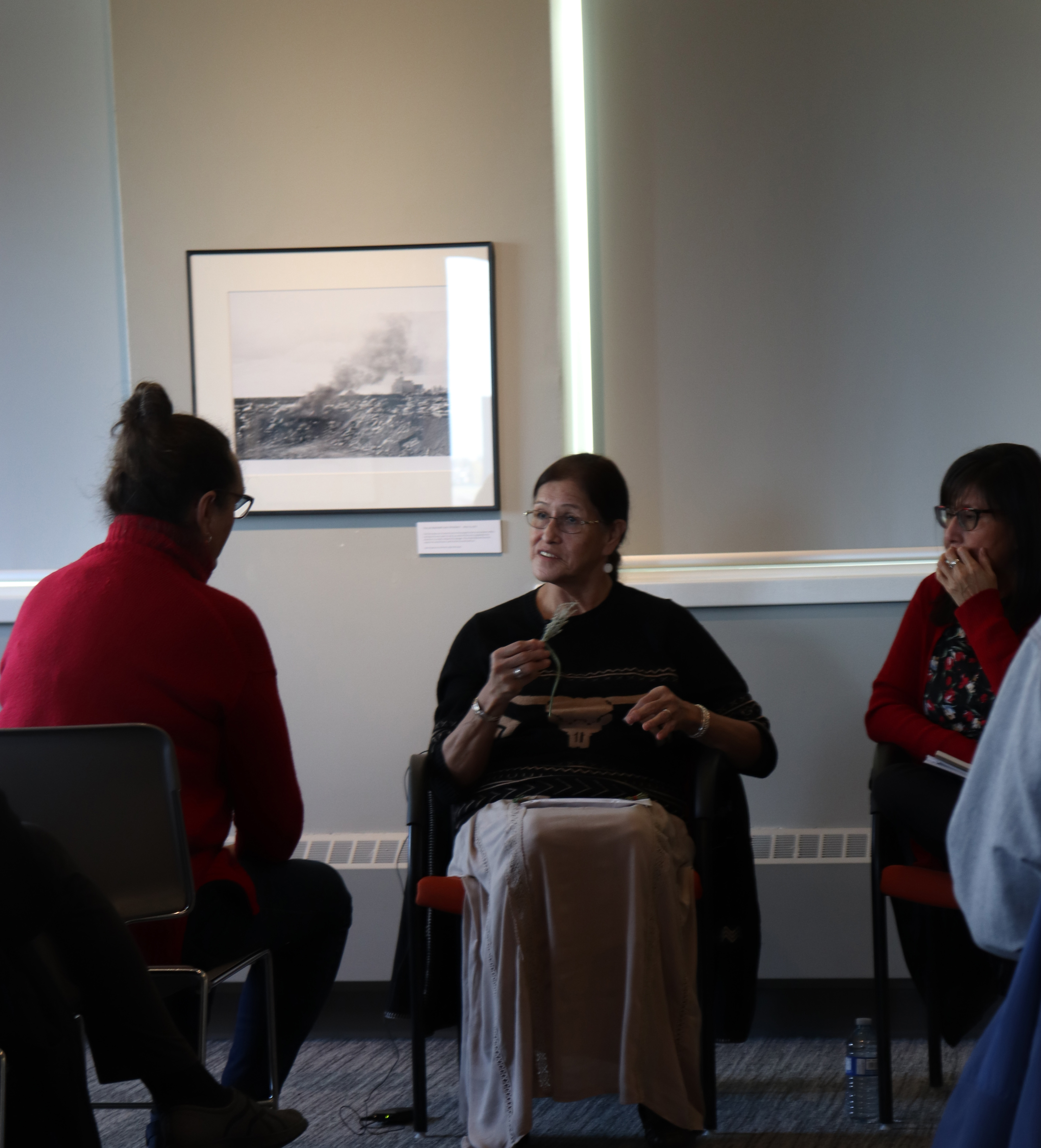A dimly lit room was filled with the smell of candles, as local history buffs and elderly folk filled the board room to learn more about Lethbridge’s local indigenous history at the Galt Museum.
The Indigenous History Program is a group of eight sessions exploring topics of Blackfoot history. The classes are held every Tuesday from Sep. 10 to Oct. 29.
Rebecca Many Grey Horses, lead educator for the indigenous history program, said the citizens of Lethbridge and Canadians in general need to have better understanding of the indigenous history in our country.
“I think it is long overdue. Canadians in general need to learn of our shared history, because it is not always in our Canadian history books and schools. The Galt Museum has taken initiative. Our topics are really unique. We have Blackfoot historical figures, which talks about our role models and ancestors who hoped to ensure our history and knowledge were passed down to us. Treaties are another very important topic to us,” said Many Grey Horses.
ADVERTISEMENTThe lead educator said attendees will hear the Indigenous perspective and their history, as well as their shared history with Canadians.
The topic being highlighted on the Oct. 15 session was how to interact within their culture and ceremonies.
At each session, a Blood Tribe elder is brought in. The elder in attendance for the Oct. 15 session was Rose Fox. Fox is also a leader for the All Womens Society of the Blood Tribe. Fox was gifted her name from her mother, Rosa Day Rider. The Blood Tribe elder brought some sweetgrass in for the audience as a demonstration of respect, as many Indigenous people believe sweetgrass helps in prayer, smudging or purifying ceremonies and consider it a sacred plant. The elder said the usual places in Lethbridge where they pick sweetgrass are disappearing due to the current state of the environment.
Fox also said that she did not teach her kids their native language because she was punished in a residential school for speaking it. She did not want that for her children, so she taught them English.
Susan Burrows-Johnson, CEO and Executive Director for Galt Museum and Fort Whoop Up, said that for people interested in attending the event in the future, the biggest conclusion they could take away from this is the rich and generous history of the Blackfoot.
“They can come to understand their practices and how their worldview helped them move around through time. I think that taking away who was here and how they function leads us to how we got here today and it is important to understand that,” said Burrows-Johnson.
The Galt Museum executive director then said the Blackfoot language classes on Thursday nights are also very important and recommends citizens to attend those as well.
The sessions have been on-going for two years now.
The next Indigenous History program will be on Oct. 22.


